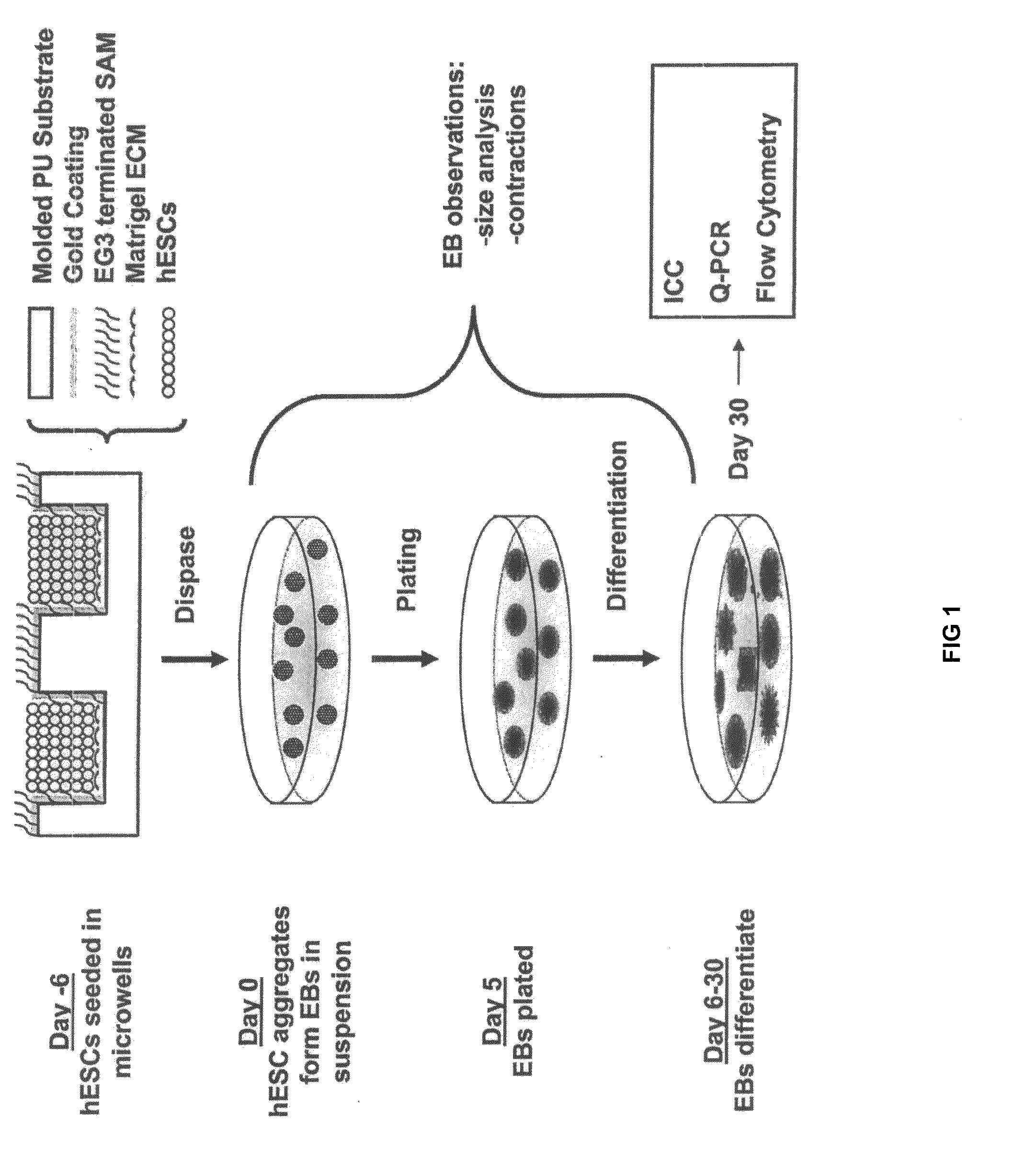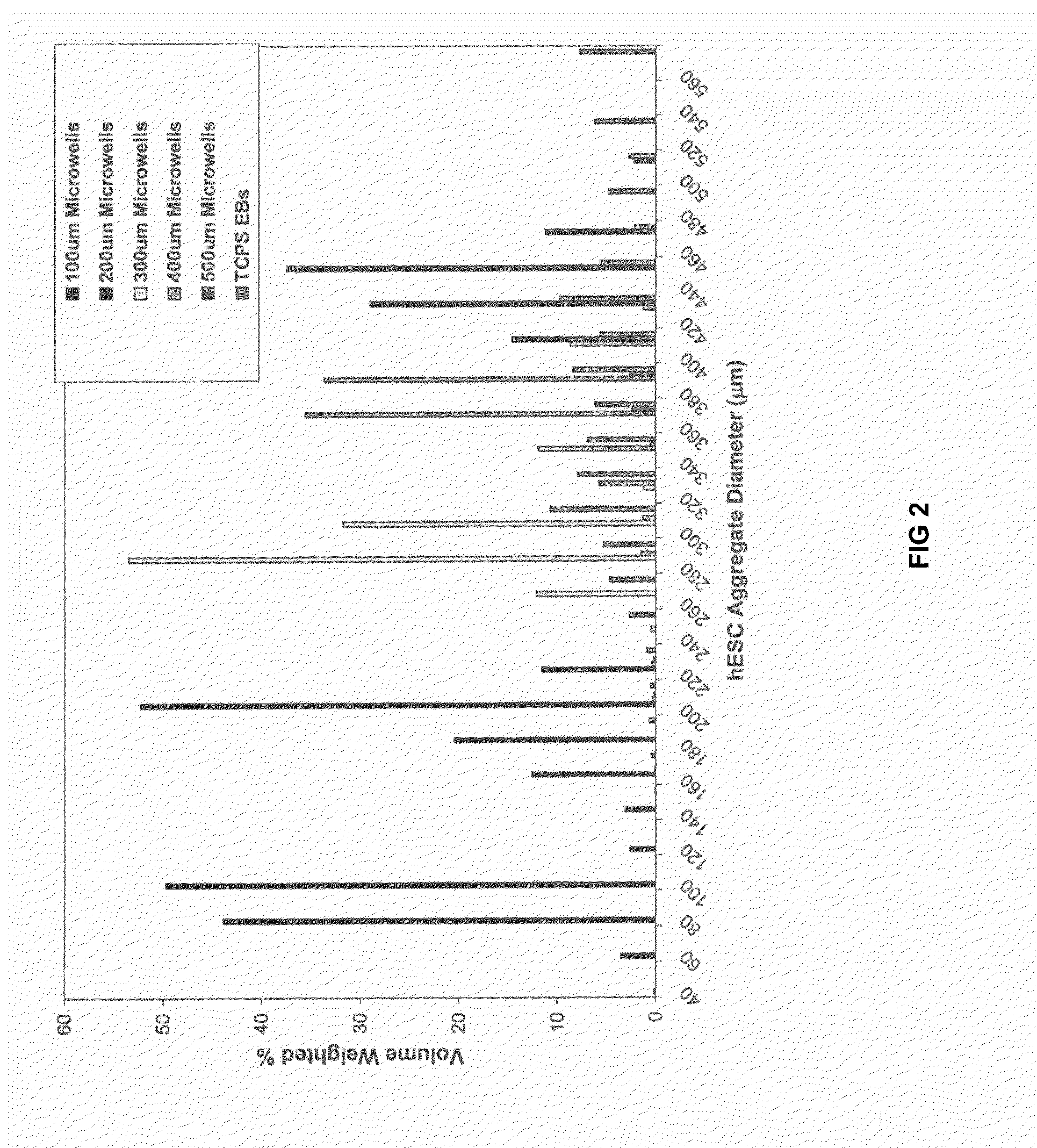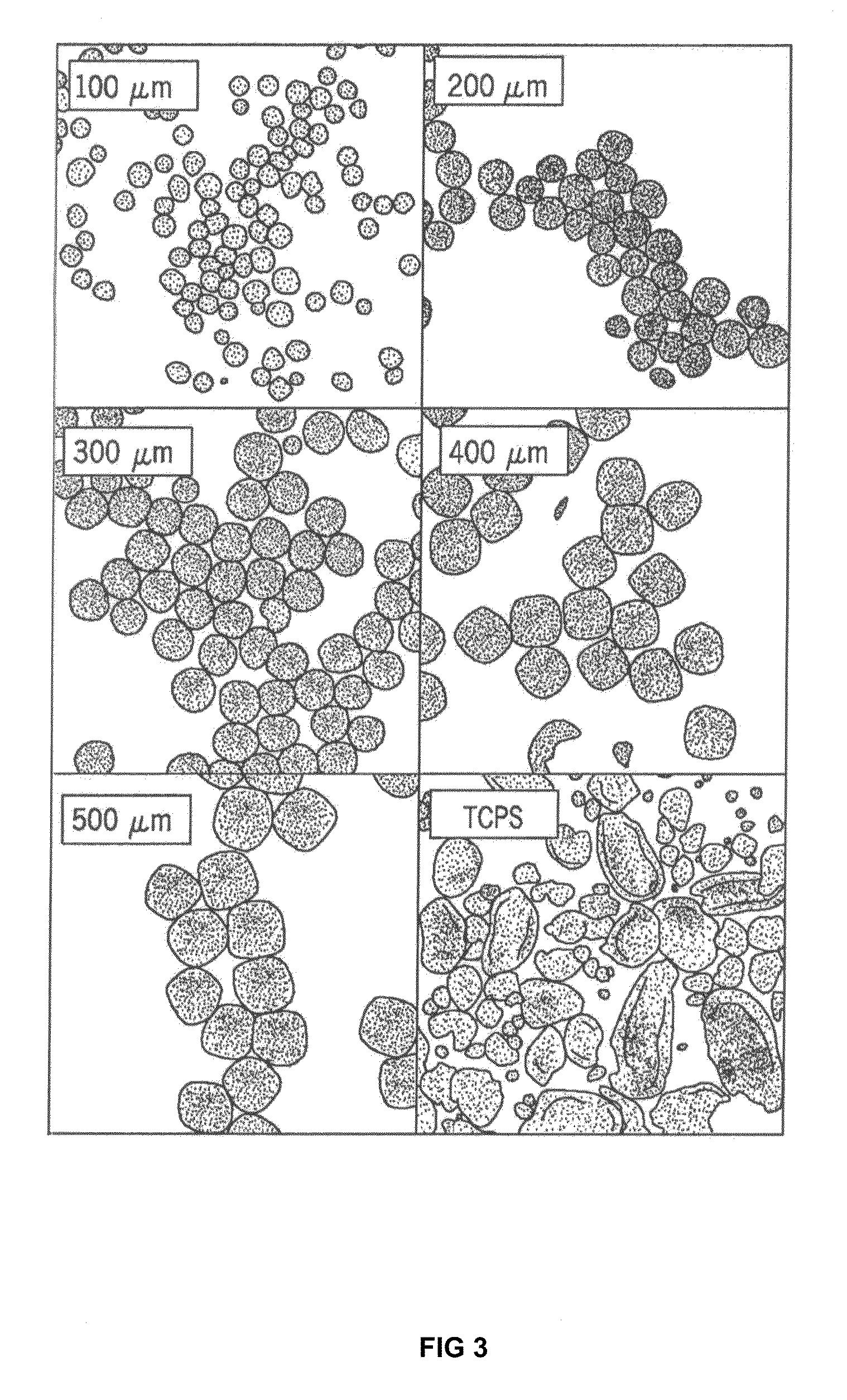Method for culturing stem cells
a stem cell and culturing technology, applied in the field of culturing stem cells, can solve the problems of inconvenient long-term hes cell culture, lack of simple methods for producing ebs of consistent and desired size from es cells, and inability to use 2-d sam monolayers for culturing primate es cells, etc., to achieve the effect of controlling the cell differentiation profile of ebs
- Summary
- Abstract
- Description
- Claims
- Application Information
AI Technical Summary
Benefits of technology
Problems solved by technology
Method used
Image
Examples
example 1
Microwells for Pluripotent Cell Culture and Embryoid Body Generation
[0034]Reference is made to FIG. 1. Microscope slides having formed thereupon a homogeneous distribution of wells of identical size and shape were constructed in three steps using a polydimethylsiloxane (PDMS) stamp to shape a surface of a UV-crosslinkable polyurethane polymer substrate. First, silicon masters, each having desired microwell patterns formed into a surface thereof, were prepared using photolithography and plasma etching techniques similar to those described by Chen et. al. [22], incorporated herein by reference as if set forth in its entirety. The surfaces were passivated by fluorination with (tridecafluoro-1,1,2,2,-tetrahydrooctyl)-1-trichlorosilane vapor. Second, a mixture of PDMS elastomer pre-polymer with curing agent (10:1) (Sylgard 184 Silicon Elastomer; Dow Corning; Midland, Mich.) was poured over silicon masters to form PDMS stamps. The mixture was degassed under vacuum and incubated overnight ...
example 2
Directed Differentiation of hES cells From Microwell Cultures
[0053]hES cells were cultured either in microwells having depths of 50 μm-120 μm and lateral dimensions of 50 μm-500 μm or in TCPS plates as described above. Briefly, samples were incubated for 30 minutes at 37° C. to allow hES cells to settle into the microwells before adding 1.5 ml / well CMF+ to the wells of a 6-well plate. The medium was changed daily thereafter and the cells typically reached confluence within a week. TCPS EBs and microwell-derived EBS were then formed as described above.
[0054]Keratinocytes differentiation was achieved by initially forming EBs from microwell-derived hES cell aggregates as described above. EBs were grown in suspension for fourteen days in UMF− medium and then attached to gelatin-coated plates in Defined Keratinocyte Serum Free Medium (DSFM) (Invitrogen; Carlsbad, Calif.). Cells were cultured 2-3 weeks prior to analysis by immunocytochemistry and flow cytometry, as described for undiffere...
example 3
Microwells for hES cells Culture and Cryopreservation
[0057]hES cells were cultured in microwells having dimensions of 50 μm deep with 50 μm to 400 μm lateral dimensions as described above. Briefly, samples were incubated for 30 minutes at 37° C. to allow hES cells to settle into the microwells before adding 1.5 ml / well CMF+ to the wells of a 6-well plate. The medium was changed daily thereafter and the cells typically reached confluence within a week. Alternatively, hES cells were cultured in TCPS dishes, as described above.
[0058]After 7 days of culture, the hES cells in microwells, suspensions and TCPS plates were placed in freezers at −80° C. for up to 4 weeks. Following cryopreservation, cells frozen in suspension were thawed by immersion of the cryovial in a 37° C. waterbath with agitation. Cells were immediately diluted in 10 ml CMF (i.e. hES cell medium conditioned on mouse embryonic fibroblasts without bFGF) and centrifuged. hES cells were then diluted in 2 ml CMF and plated ...
PUM
 Login to View More
Login to View More Abstract
Description
Claims
Application Information
 Login to View More
Login to View More - R&D
- Intellectual Property
- Life Sciences
- Materials
- Tech Scout
- Unparalleled Data Quality
- Higher Quality Content
- 60% Fewer Hallucinations
Browse by: Latest US Patents, China's latest patents, Technical Efficacy Thesaurus, Application Domain, Technology Topic, Popular Technical Reports.
© 2025 PatSnap. All rights reserved.Legal|Privacy policy|Modern Slavery Act Transparency Statement|Sitemap|About US| Contact US: help@patsnap.com



